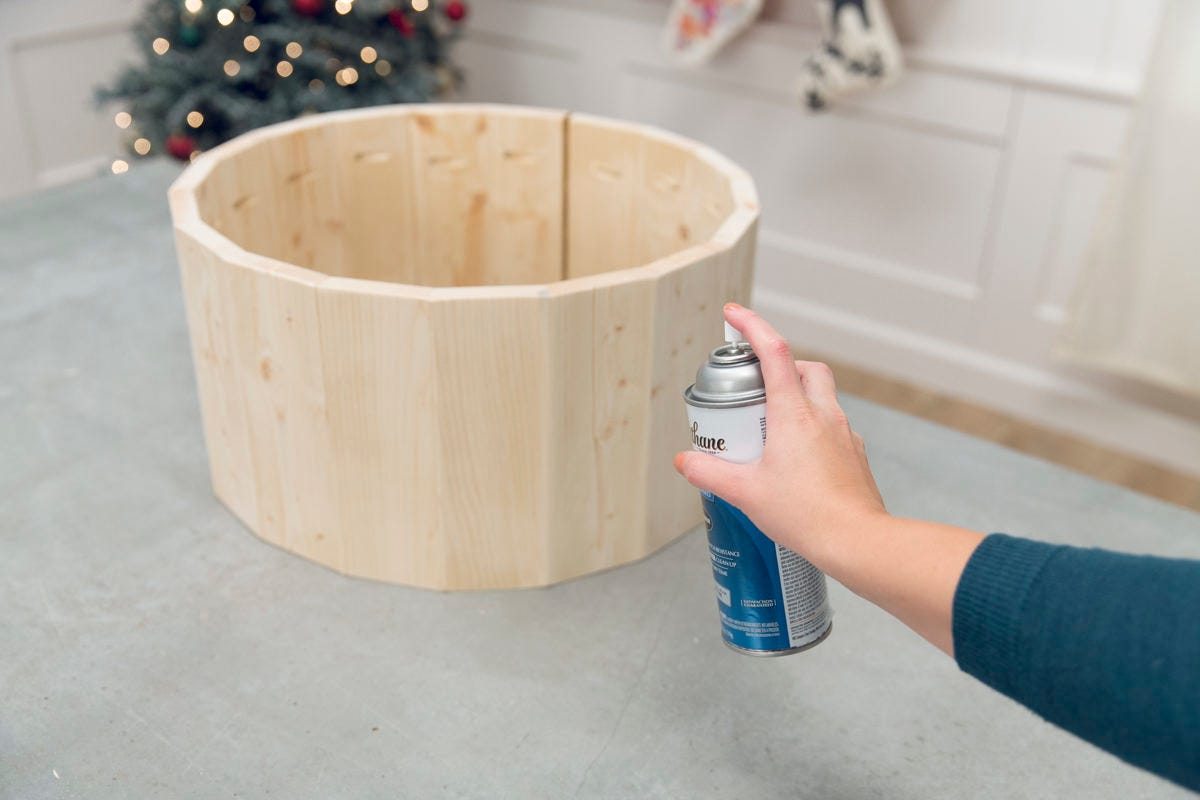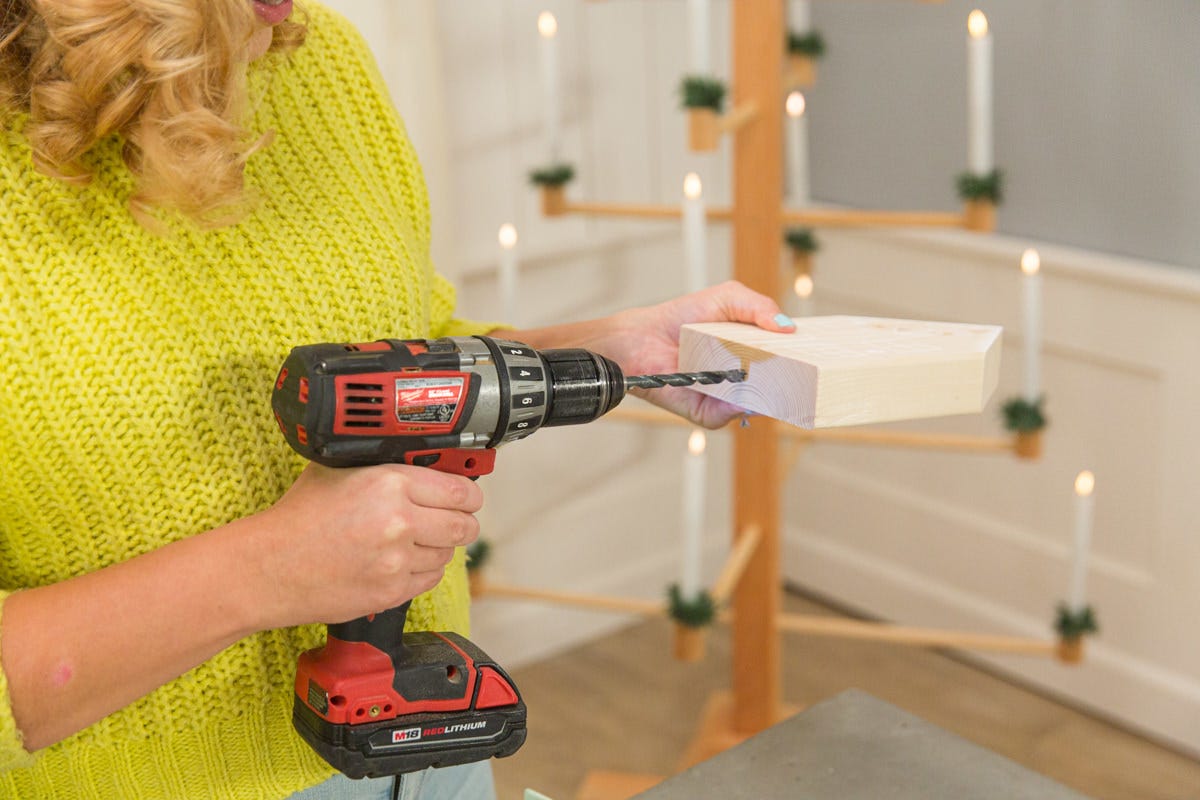
"This DIY kitchen island uses epoxy finish to give its countertop a shiny white gleam."
Materials
2023 Note: We used System Three MirrorCoat Colors epoxy in this project. This product is no longer available, but a suitable alternative is painting underneath with latex or water-based paint. Please note all epoxy is amber hued so it will show when poured onto something white.
A good island countertop can totally transform a kitchen. Not only do kitchen islands add functional storage to your space, but they also give those of us with smaller kitchens a useful surface to make prepping and serving easier.
Creating your own DIY kitchen island is not as difficult as you might think—all you need is a cabinet, a rolling base, and a countertop. When it comes to finishing your countertop, you have lots of options to put your own spin on it—butcher block, marble, tile, and so on. We opted to use a shiny white epoxy finish on ours using plywood as the countertop base.
Let’s start building!
Step 1: Measure and cut frame
Start by measuring the bottom of your cabinet (the box itself, not the door). Ours is 12” by 21”.
Cut a rectangular frame to fit the bottom of the cabinet base using two-by-fours with an outside dimension of 12” by 21”. Then, miter the corners to create a frame around the base. Cut the end of a two-by-four at 45 degrees using a circular saw and a speed square. You can also use a miter box and hand saw.
Measure 12” from the point of the board and mark.
Using a speed square, draw a line at a 45-degree angle 12” from the point. This piece, and subsequent pieces, will have opposing angles, like a picture frame. In other words, the cut ends create opposing 45-degree angles to make a corner.
Using this cut piece as a template, mark a second piece by setting the cut board on top of the long board and marking it with a pencil before you cut.
Now for the other sides: Measure a piece 21” from the point of the long board, mark an opposing 45-degree angle, and cut your third side. Using this side as a template, mark and cut the fourth and last side.
Step 2: Assemble frame
Now it’s time to assemble the frame at the base of the cabinet. Turn the cabinet base upside down and place one of the short two-by-fours along the front edge of the base of the cabinet (don’t include the cabinet door). Center it and screw in place with 2” screws. Anything longer than 2” will likely protrude through the floor of the cabinet.
Next, line up one of the long sides on the bottom of the base making sure it’s centered and abuts the first piece with minimal gap. Then, fasten into place with 2” screws. Repeat this process with the last two sides of your frame.

Step 3: Mount casters
To mount the casters, lay them out on your frame. We’re using two fixed casters at the back of the base and two swivel casters at the front so that our island can be easily maneuvered. Position the screw holes in the casters so that the screws will sink into the two-by-four frame without hitting another screw head or seam of the frame. Mark a spot for each hole using an awl, then screw the casters into place using 1 ⅝” screws.

Step 4: Accessorize
The back of our cabinet was unfinished, so we decided to add some contact paper to cover the unfinished wood and give it a more complete look. If you’d like to add hooks and hardware to hold cutting boards, pot holders, or dish towels, now is a great time to install them.
Step 5: Apply first coat of epoxy
From this step on, things will get messy. Lay out a drop cloth to create a workspace large enough to allow you to work freely. This will protect your floors from epoxy that will drip over the edges of the countertop (don’t take any chances here—when we say it will drip, we mean it!).
Level your countertop on a temporary platform so the liquid epoxy will dry evenly. We used plastic shims and a bullseye level to make sure everything was as flat as possible.
We used System Three's MirrorCoat epoxy in white. Following the instructions on the bottle, pour part “A” of the epoxy and then part “B” into a plastic mixing tub. Stir well for 30 seconds and then pour out onto your countertop.
Using a roller, spread the epoxy evenly over your surface. Then, trade your roller out for a brush and spread the epoxy all the way to the edges of your surface and down the sides.
Once you’ve covered the top and side surfaces of your plywood pieces it’s time to hit pause so things can dry overnight.

Step 6: Apply second coat of epoxy
After your first coat is completely dry, mix up enough epoxy for a top coat on all of your plywood surfaces. Once again, follow the instructions and, using the same two-to-one ratio, mix up the epoxy. Stir well then pour the mixture out onto the countertop. Using a brush, spread the epoxy evenly across the entire surface and then down the sides.
This layer of epoxy will take longer to dry, so leave it to rest for a few days before continuing on. If you have any areas where the epoxy dried unevenly due to drips, you can simply sand them down.
Note: Our epoxy dripped down the sides quite a bit, as you'll see in the photos. To mitigate this and create finished sides, use a paint brush to fully coat the side surfaces and keep a rag handy to wipe up any drips. After the epoxy dries, you can sand down any visible drips and re-coat, if desired.
Step 7: Mount countertop
Once the top coat is dry, it’s time to mount the countertop. Center the countertop slab on top of the cabinet. Choose a screw length that won’t poke through the top of the cabinet and screw the countertop into place from the bottom up, through the cabinet frame, and into the countertop.

And that’s it! Now you’re ready to rock ‘n’ roll with your new kitchen island.
For more projects like this, check out our DIY tiki bar and easy how-to for applying epoxy to create a bartop finish.


